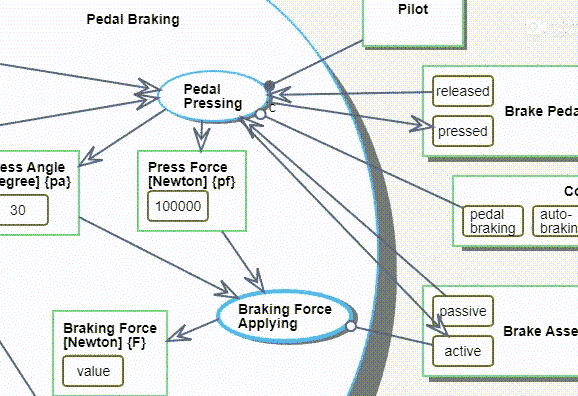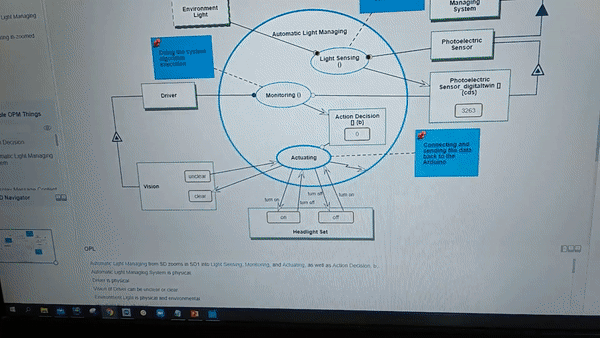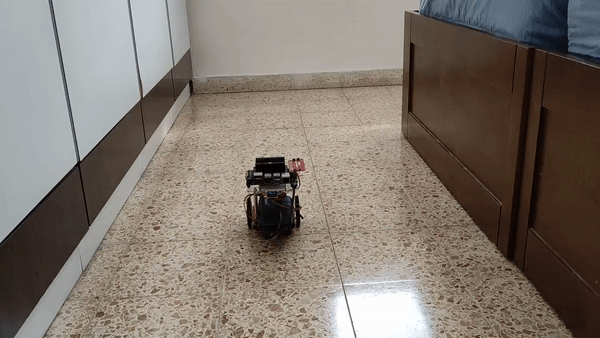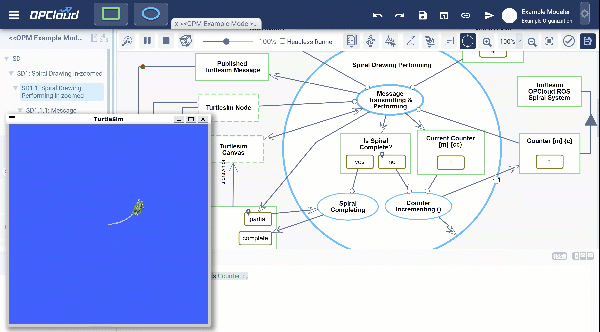
OPCloud main features

Web-based application; ability to work from everywhere

Collaborative work of multiple modelers

OPM ISO 19450:2015 compatible

Interface with other system (DOORS, ARAS...) using OSLC, RDF

Using latest technologies

Context-sensitive modeling promotes correct-by-construction model

Backward compatibility for OPCAT models

Object-Process Methodology (OPM) is a language and approach for modeling and communicating the architecture and detailed design of complex systems of all kinds, based on a minimal universal ontology of objects and processes that transform them. By using intuitive yet formal graphics and natural language text, OPM models communicate what systems do, why and how they do it, as well as what they require to accomplish these tasks.
Technology
By integrating intuitive graphic user interfaces with correct-by-construction principles, OPCloud leverages state-of-the-art Cloud technology to implement ISO 19450 OPM. As we continue to evolve, OPCloud incorporates computational capabilities and additional features to enhance the upcoming ISO International Standard revision in 2021-22. These advancements enable seamless modeling of intricate systems, encompassing hardware, software, human elements, and regulatory considerations, within an integrated environment that seamlessly interfaces with specialized engineering software programs.
Our Vision
By catering to humans' dual-channel processing, the seamless synergy of graphics and text in OPCloud significantly enhances engineers' capabilities to model and create intricate systems in science and engineering, while effectively conveying the underlying complex ideas. Our vision for OPM extends beyond internal use within companies for architecting and designing new systems, products, and services. We foresee its application in managing the vast and constantly expanding pool of human knowledge through global collaboration. Thanks to OPM's universal nature and its minimal yet powerful set of concepts, this vision is rapidly transforming into a tangible reality.
Fortune 500
OPM enjoys global adoption among prominent Fortune 500 companies as well as organizations spanning diverse industries. These include automotive, aviation, white appliances, energy companies, space agencies, and insurance providers. The versatility and applicability of OPM across these sectors demonstrate its effectiveness in addressing complex challenges and facilitating efficient system modeling and design processes.
Model-Based Systems Engineering
A conceptual model serves as a fundamental element of any system, and OPCloud empowers you to efficiently create a conceptual-computational OPM system model while simultaneously generating a formal, executable model. With OPCloud, you can seamlessly capture and model your customer's requirements, explore various solution architectures, evaluate alternatives, select the most suitable option, and progress towards detailed design. Your OPM model becomes the definitive source of authority, serving as a shared knowledge repository for all stakeholders involved, ensuring consistent understanding and collaboration throughout the project lifecycle.

Model Intuitively Yet Formally
The lifecycle of any system, product, or service commences with conceptual modeling. OPCloud empowers you to swiftly and intuitively generate a conceptual model for your system while simultaneously obtaining a formal model that can undergo rigorous checks, simulations, and verifications. With OPCloud, you can seamlessly bridge the gap between conceptualization and technical implementation, ensuring the accuracy, reliability, and effectiveness of your system model throughout its lifecycle.

Animate, Debug Simulate, Validate
Throughout the modeling process, OPCloud enables the modeler to visualize the model at any stage. The animated simulation feature proves invaluable in comprehending the system's behavior and can be executed in a sequential or step-by-step manner. In case a logical error halts the model simulation, OPCloud offers suggested solutions to rectify the issue, facilitating a streamlined troubleshooting process and ensuring the accuracy and reliability of the system model.

Do It All in an Agile Mode
OPCloud is user-friendly, combining diagrams and natural language text for easy and fluent conceptual modeling. Its advanced algorithms ensure accurate models from the start, unleashing your creativity and streamlining the modeling process. With OPCloud, the modeling process becomes intuitive and productive, enabling users to unleash their full creative potential.
IoT Designing and Developing
When designing systems such as wireless communication, radar, or autonomous systems, the creative process begins in the mind, not in front of a computer. OPM and OPCloud support the design and development of IoT systems, offering conceptual and computational modeling, simulation, hardware-in-the-loop (HIL) testing, multi-instance systems, and optimization. OPCloud enables the development of models with IoT elements that can be directly controlled, harnessing its powerful capabilities for IoT system design.
OPM Stereotypes
Most modeling languages used for MBSE rely on stereotypes to extend the language and empower users. In OPM and OPCloud, we have introduced new stereotypes that can enhance models and be customized to suit any organization's needs. These stereotypes cover a wide range of applications, from foundational stereotypes for modeling vehicles to constraints for system design and even security considerations for IoT systems. With our versatile set of stereotypes, you can effectively capture and represent various aspects of your models.
IoRT Control
IoRT (Internet of Robotic Things) represents the next stage of evolution in IoT systems. It expands on the capabilities of traditional IoT by incorporating non-deterministic agents like humans and autonomous robots. In OPCloud, we have integrated the ROS (Robot Operating System) architecture to enable advanced IoRT capabilities. Our computational models have been enhanced to support ROS messages, message stereotypes, as well as the modeling of simple IoRT systems and multi-agent IoRT systems. With OPCloud, you can effectively model and simulate complex IoRT scenarios and explore the potential of this emerging technology.
Model Optimization
Video Introductions
System model optimization is a challenging task, and in OPCloud, we integrate cutting-edge optimization techniques to address this challenge. Leveraging methods such as Pareto Front, Design-Structure Matrix (DSM)-based techniques, and graph database queries, we empower users to discover the optimal configuration for multi-objective problems. Our advanced optimization capabilities enable you to efficiently explore and identify the best system configurations, ensuring optimal performance and achieving desired objectives.
Explore our dedicated YouTube channel featuring comprehensive instructional videos on utilizing OPCloud's diverse range of features. Whether you're a beginner or an advanced user, you'll find valuable resources to enhance your modeling experience. Additionally, OPCloud offers a tutorial mode within the platform itself, incorporating animated GIFs that provide step-by-step guidance on utilizing each feature. With these resources at your disposal, mastering OPCloud and harnessing its full potential has never been easier.

System Optimization
In real-world situations, a system must be optimized to meet multiple objectives, often conflicting. This is known as multi-objective optimization. With OPCloud's advanced features, you can employ methods such as Design-Structure Matrix (DSM), graph database querying (Neo4j), or Pareto Front calculations to tackle these challenges effectively.

IoT Prototyping
Embedded devices serve as the fundamental components of embedded systems, encompassing microcontrollers (e.g., ARM), microprocessors, memory, and input/output peripherals. OPCloud goes beyond simulation by supporting Hardware-in-the-Loop (HIL) testing. Leveraging its powerful simulation capabilities, OPCloud can also integrate real HIL through URLs and MQTT protocols.

Robots Controlling
The Robot Operating System (ROS) is an open-source meta-operating system designed for robots, offering essential functionalities like hardware abstraction and low-level device control. OPCloud excels in its capability to connect to a ROS master and seamlessly publish and subscribe to robots, leveraging the power of ROS integration.

